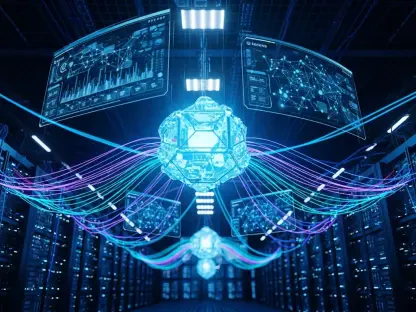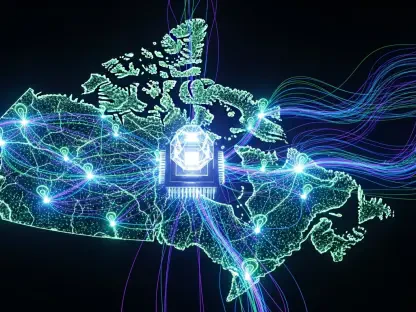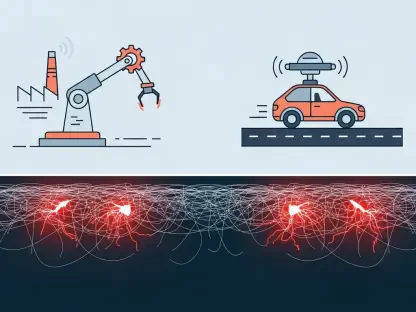In an era dominated by the rapid pace of technological innovation and digital transformation, Communication Service Providers (CSPs) have witnessed a seismic shift in operations with the integration of generative Artificial Intelligence (genAI). This groundbreaking technology promises to streamline operations and address the persistent challenges faced within the telecom sector. The evolving landscape, influenced by the complexity of cloud-native and multi-vendor infrastructures, necessitates a more coordinated, AI-driven operational model to meet stringent Service Level Agreements (SLAs) and increasing consumer demand. As a result, CSPs are transitioning from traditional manual workflows characterized by static scripts and isolated solutions to a cohesive operational framework rooted in scalable AI integration. By leveraging genAI, telecom operators can enhance network reliability, accelerate service delivery, and achieve sustainability targets, thus bridging the gap between technology advancements and business alignment.
Challenges Plaguing Traditional Telecom Operations
Traditional telecom operations have long been constrained by outdated frameworks incapable of adapting to the fast-paced, highly dynamic nature of modern network environments. Despite the burgeoning demands of global connectivity, many CSPs struggle with legacy systems that rely heavily on manual processes and fragmented tools, resulting in inefficiencies. This reliance on static workflows hinders the ability of CSPs to respond promptly to various network events such as outages, weather disruptions, and sudden spikes in data traffic. Consequently, this lack of agility leads to protracted resolution times and inflated operational costs, ultimately stifling innovation and reducing competitiveness in the market. Furthermore, these obstacles can impede CSPs from capitalizing on emerging market opportunities, as the slow adaptation threatens to leave them outpaced by more nimble competitors.
In such an environment, the challenge of scaling AI applications effectively becomes evident. The disparate nature of legacy systems and processes not only inhibits real-time decision-making but also makes large-scale AI integration problematic. Moreover, the absence of a unified framework capable of seamlessly integrating AI solutions leaves CSPs grappling with inconsistent service delivery and suboptimal customer experiences. As demands on network infrastructures continue to mount, CSPs require a transformative approach that can navigate these complexities. In response to such challenges, the GenAI-powered cognitive toolkit has emerged as a vital solution, providing CSPs with the necessary tools to address these hurdles while driving business growth and innovation in the evolving digital landscape.
Evolution Towards GenAI-Powered Frameworks
The transition to genAI-powered frameworks marks a pivotal turning point for CSPs aiming to enhance their operational capabilities. The introduction of the GenAI-powered cognitive toolkit offers an innovative approach to network and service management. This initiative emphasizes a standards-aligned framework that promotes AI scalability and operational integration across various domains. By linking AI capabilities directly to business objectives, CSPs can ensure decision-making processes are not only data-driven but also adhere to established trust and governance protocols. A key element of this framework is the deployment of an AI mesh—a network of autonomous agents dedicated to specific tasks such as fault prediction, service provisioning, and customer assurance. These agents, through event-driven APIs and shared data structures, can communicate and make coordinated decisions in real-time, significantly improving the efficiency of telecom operations.
Moreover, the framework’s architecture enables agents to work collaboratively, applying shared goals and real-time information to prioritize actions based on business outcomes. The potential benefits of this system are manifold, ranging from reduced operational delays and faster decision-making to increased adaptability in responding to network changes. Central to the framework’s effectiveness is the temporal knowledge graph (TKG), which serves as a crucial memory layer. This sophisticated data structure not only captures temporal relationships between service topologies and customer impacts but also facilitates advanced reasoning strategies. Consequently, such intelligent insights empower agents to discern patterns and correlations, enhancing their capacity to forecast impacts and address potential network issues proactively. This shift from reactive to proactive management enables CSPs to better serve their customers while boosting overall operational efficiency.
Bridging Business Intent and Technical Execution
Integrating business intent with technical execution is an essential component of the genAI-powered framework, enabling CSPs to align strategic objectives with operational actions. The intent orchestration layer functions as a transformative bridge, converting user inputs into actionable technical commands. Utilizing the TM Forum’s Open Digital Architecture (ODA) component model and TMF APIs, this layer democratizes network operations by removing the need for specialized technical expertise. As a result, both commercial and operational users can initiate autonomous actions, driving efficiency and reducing the complexity traditionally associated with telecom processes. This innovative approach facilitates a seamless transition from high-level objectives to granular technical execution, thereby expediting the rollout of new services while minimizing errors and manual rework.
Ensuring oversight and trust in AI-driven operations is another cornerstone of the GenAI-powered framework. A policy-governed execution framework is employed to validate each agent’s decisions. The TMF725 Policy Management API ensures actions comply with predefined operator guidelines, establishing a rigorous validation protocol for rule adherence and permission management. Actions meeting validation criteria are executed via standardized APIs, such as TMF622 and TMF641, ensuring traceability and accountability. Emphasizing policy alignment and automated governance fortifies trust and aligns operations with an organization’s strategic priorities. Furthermore, this framework introduces a shift from rule-based automation to value-stream-based prioritization. As CSPs continuously monitor and adjust metrics related to SLA compliance and resource efficiency, AI agents can adaptively prioritize operations in line with evolving business conditions.
Real-World Applications and Success Stories
Numerous real-world applications have demonstrated the transformative impact of genAI-powered frameworks for CSPs globally. One notable example is the collaboration between Digital Nasional Berhad (DNB) in Malaysia and the GenAI Catalyst initiative, designed to enhance Mean Time To Repair (MTTR) and streamline operations. By leveraging genAI and intent-based automation, DNB has optimized its service desk operations for six national carriers, providing enhanced access to 5G data and improving automated resolution capabilities. Through advanced data insights and generative AI functionalities, DNB has significantly reduced problem-resolution times, leading to improved service delivery and increased customer satisfaction. Moreover, the Catalyst framework has cut fault detection and triage times by an impressive 85%, according to insights from industry experts.
Such operational efficiencies translate into substantial cost savings, with initial data suggesting operational expenditure reductions of more than 20%. Beyond cost reductions, the GenAI framework’s interplay with B2B2X monetization models and SLA-driven service slicing opens new revenue streams. As CSPs harness the potential for dynamic service delivery, leveraging AI-driven capabilities becomes a core component of their strategic growth. These advancements underscore the crucial role of genAI, not only in optimizing current operations but also in exploring future market ventures. Additionally, the GenAI-powered architecture accelerates time-to-market for new offerings, as the alignment between business intent and technical execution mitigates potential bottlenecks and enhances operational agility in deploying innovative services.
Societal Impacts and Environmental Benefits
Beyond enhancing commercial operations, the GenAI-powered framework offers wide-ranging societal benefits, particularly in enhancing the resilience and sustainability of network infrastructures. In times of crisis, such as extreme weather or emergencies, this architecture facilitates the maintenance of essential services in healthcare, education, and emergency response sectors. By prioritizing critical services based on real-time conditions, CSPs can ensure uninterrupted connectivity when it matters most. Furthermore, the framework contributes to environmental sustainability objectives, reducing energy consumption by over 25% through smart provisioning techniques. This reduction aligns with CSPs’ commitments to achieving net-zero emissions and underscores the role of genAI in driving eco-friendly network operations.
Democratization of network operations is another noteworthy impact of genAI integration. By incorporating natural language interfaces, CSPs enable broader participation beyond traditional engineering roles, allowing individuals from diverse backgrounds to engage with network management. This inclusive approach reduces operational complexity, empowering more stakeholders and fostering innovation across departments. Ultimately, the GenAI framework positions CSPs as not only technology enablers but also responsible stewards capable of supporting positive societal and environmental outcomes. By integrating advanced AI capabilities into their operational fabric, CSPs demonstrate a commitment to sustainable growth and customer-centric service delivery while aligning with global sustainability and innovation goals.
Transformative Implications and Future Outlook
In today’s fast-paced world driven by technological advancements and digital evolution, Communication Service Providers (CSPs) have experienced a significant transformation due to adopting generative Artificial Intelligence (genAI). This pioneering technology offers the potential to streamline operations and address recurring issues in the telecom industry. The sector is evolving with its complex cloud-native and multi-vendor infrastructures, demanding a more integrated, AI-driven approach to fulfill Service Level Agreements (SLAs) and rising consumer expectations. Consequently, CSPs are shifting from traditional manual processes that relied on fixed scripts and disjointed solutions to a unified operational model centered on scalable AI integration. Through genAI, telecom providers can improve network reliability, speed up service deployment, and meet sustainability goals. This evolution effectively bridges the gap between technological progress and business objectives, ensuring CSPs remain competitive and responsive to market demands.









